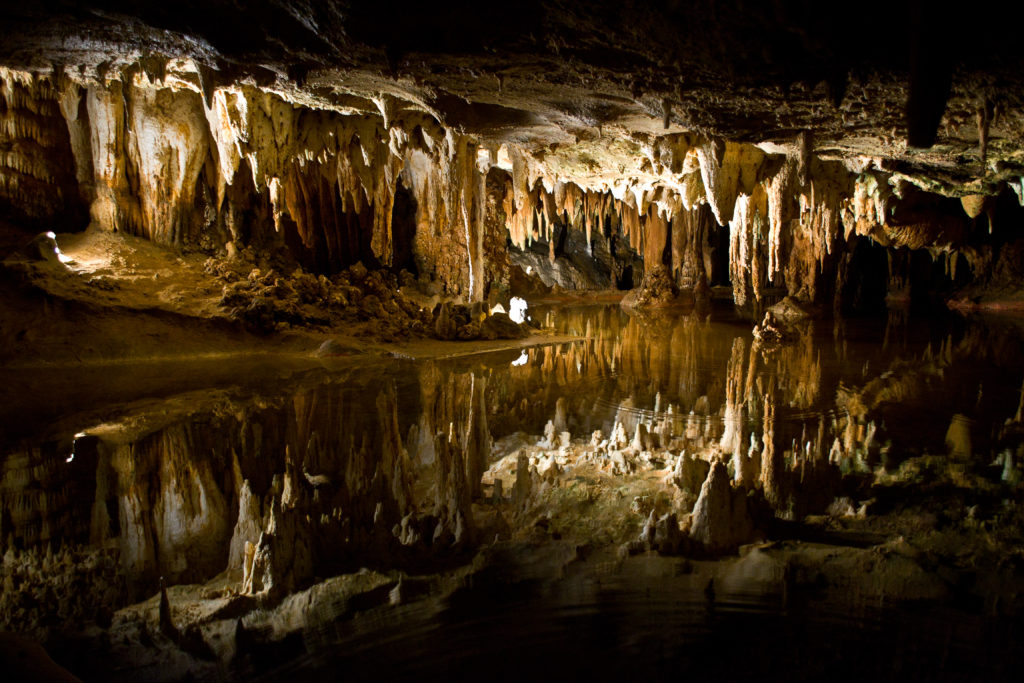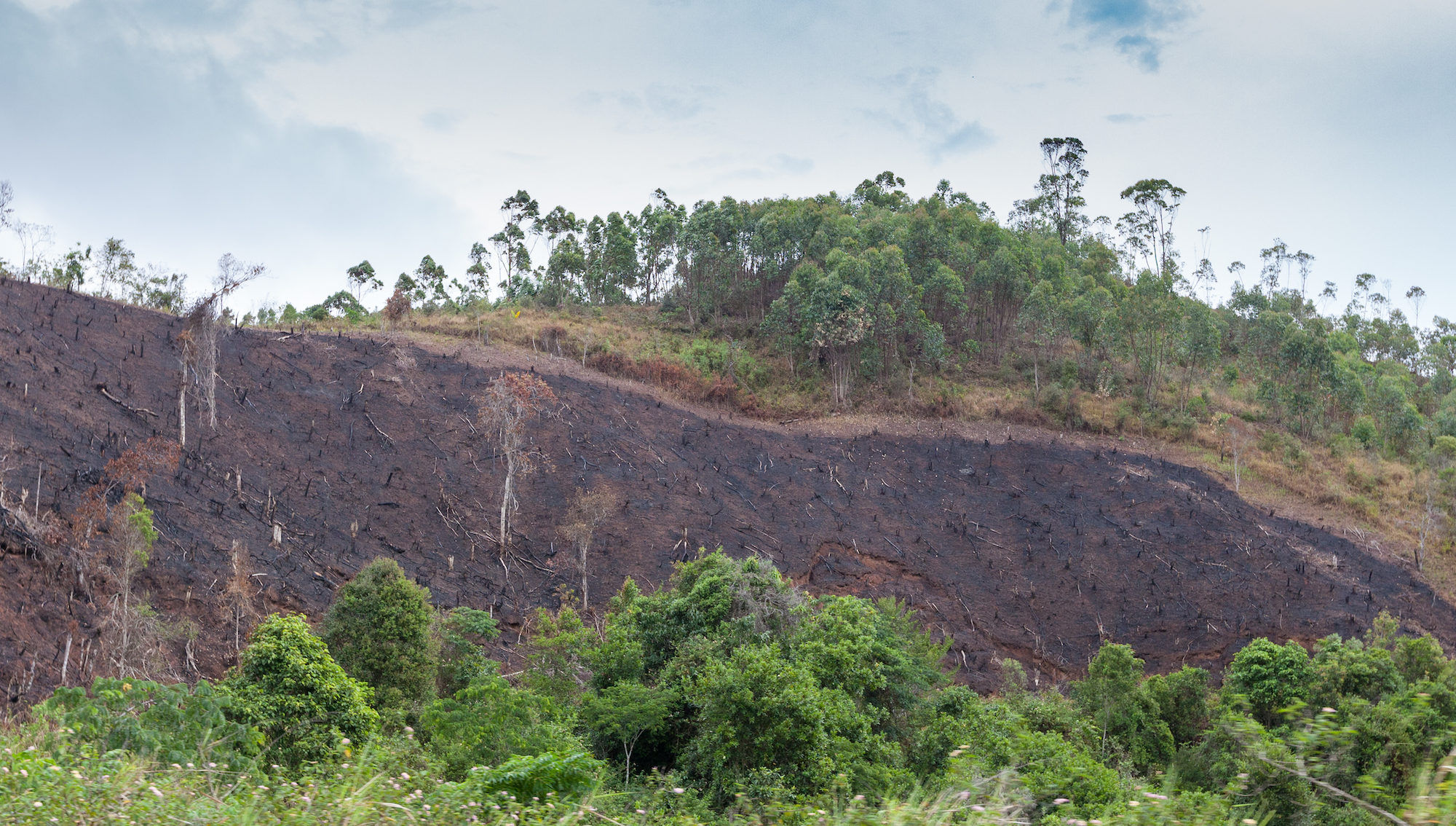Featured image: Deforestation in Madagascar, image credit: Gregoire Dubois, CC BY-NC-SA 2.0, on Flickr.
Paper: Relationships between climate change, human environmental impact, and megafaunal extinction inferred from a 4000-year multi-proxy record from a stalagmite from northwestern Madagascar
Authors: L. B. Railsback, L. A. Dupont, F. Liang, G. A. Brook, D. A. Burney, H. Cheng., and R. L. Edwards
Madagascar is so large and ecologically unique that it has been dubbed a continent in its own right. It wasn’t occupied by humans until 3,000 years ago and the island’s megafauna died out comparatively recently. Just 1000 years ago sloth lemurs the size of pandas, 10-foot tall elephant birds, and a puma-like predator called the giant fossa roamed the island.

But what caused Madagascar’s megafauna to finally go extinct? Some theorize that the extinction was due to island-wide drought, whereas others blame human occupation, bringing with it increased hunting and forest clearance.
In a new article, Bruce Railsback at the University of Georgia uses data from cave stalagmites to reconstruct conditions on the Island at the time of the megafaunal extinction; and concludes that humans were the most likely cause.
Stalagmites (or speleothems) record environmental conditions, such as droughts, as they grow over thousands of years. These towering structures form as mineral-rich water slowly drips onto the cave floor, each successive drop adding another layer of calcium carbonate. Scientists can harvest their climate data by measuring stable isotopes of oxygen and carbon in the calcite. Uranium-thorium dates on the speleothem also tell scientists when the climate and landscape changed.

Railsback and his team headed to the Anjohibe Cave, on Madagascar’s northernwestern coast, to collect overlapping slices from the length of a speleothem, which formed 3,900 years ago and stopped growing 250 years before the present. The isotopic signal of the speleothem told Railsback that Madagascar’s climate had fluctuated dramatically in the past. But when the team looked at the data, they found no sign of island-wide drying at the time of the extinction. They did find a noticeable increase in carbon-13 about 1200 years before present, indicating a change from a forested to grassland landscape. Railsback notes that the evidence of this landscape disturbance matches other environmental evidence from northwestern Madagascar. Sediments retrieved from lakes in the area contain a spike of both charcoal from fires and grass pollen at about 1200 years before present, along with a coeval increase in the fungus Sporormiella, which is associated with the dung of large herbivores such as cows.
Railsback’s study adds to the growing palaeoclimate and archaeological dataset in support of humans triggering the extinction. The evidence points to a drastic shift in the landscape and Malagasy lifestyle at this time. Communities moved from a livelihood reliant on hunting and foraging to one centered on large scale farming of cattle and rice, requiring tracts of forest to be cleared using the slash-and-burn method. This shift supported Madagascar’s population growth, but habitat removal spelled the end for the megafauna.
Humans have continued to transform the Madagascan landscape, with an estimated 40-50% of forest removed between 1950 and 2000. As the world’s forests disappear and populations of elephants and rhinos falter, it seems we can learn a lot from the past. Perhaps Madagascar’s megafaunal extinction forewarns of things to come?

Humans most likely drove Madagascar’s megafaunal extinction by Erin Martin-Jones is licensed under a Creative Commons Attribution-NonCommercial-ShareAlike 4.0 International License.

